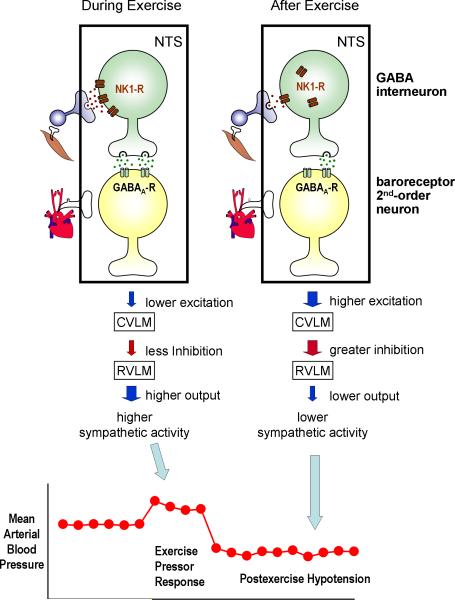Figure 5.
A simplified schematic illustrating the interaction between substance P and γ-aminobutyric acid (GABA) transmissions in the nucleus tractus solitarii (NTS) on blood pressure regulation before, during and after exercise. During exercise, muscle afferent releases substance P to activate the NTS GABA interneurons to reset baroreflex to a higher level (exercise pressor response). Activation of the neurokinin-1 receptor (NK1-R) during exercise triggers the receptor to undergo internalization, which dampens the NTS GABA interneurons and resets baroreflex to a lower level after exercise (postexercise hypotension). [Adapted from Chen C-Y, Bechtold AG, Tabor J, Bonham AC. Exercise reduces GABA synaptic input onto nucleus tractus solitarii baroreceptor second-order neurons via NK1 receptor internalization in spontaneously hypertensive rats. J. Neurosci. 2009; 29(9):2754–2761. Copyright © 2009 Society for Neuroscience. Used with permission.]

